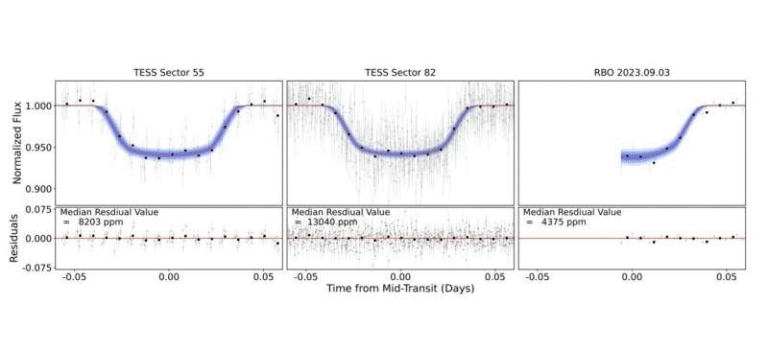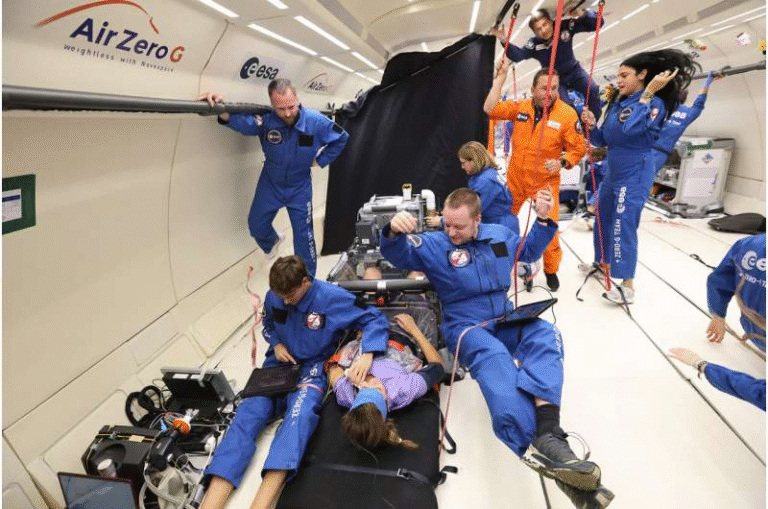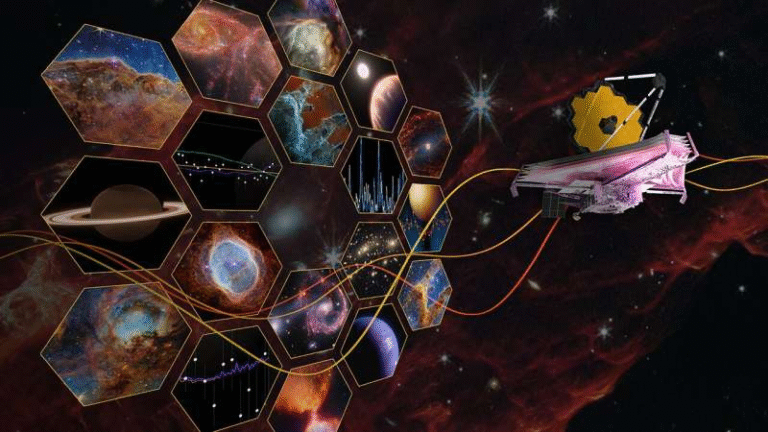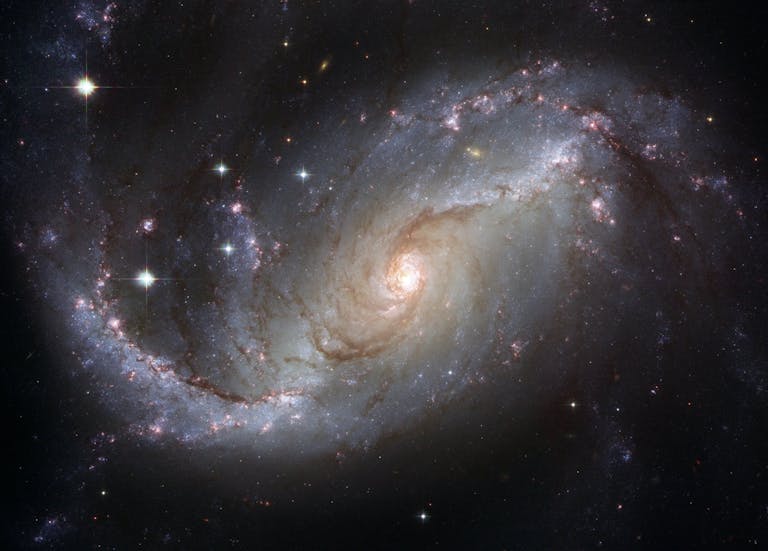Cosmic Voids Are Not Truly Empty — They’re Full of Vacuum Energy

Have you ever gazed into the night sky and wondered what lies between the galaxies? The immense regions of space where matter seems to vanish — the so-called cosmic voids — are not simply vast empty nothingness. In a recent popular science article, astrophysicist Paul Sutter explains that these voids, while sparse in matter, are actually dominated by the vacuum of space-time and its quantum fields. That vacuum isn’t “nothing” — it has energy, and that energy plays a key role in the structure and expansion of our universe. (Original article published November 5 2025).
Here’s a straightforward breakdown of the details, and some additional background to help you understand just how empty — or not empty — these voids are.
What are cosmic voids?
When astronomers map the large-scale structure of the universe — galaxies, clusters, filaments, walls — they notice that much of the volume is taken up by regions with very low density. These are the cosmic voids: enormous spaces, spanning tens to hundreds of millions of light-years, where few galaxies live and matter is scarce. (Wikipedia)
In the article, Sutter says that if you remove “all the matter, neutrinos, dark matter, cosmic rays, and radiation from the deepest parts of the voids”, what remains is empty space. But he emphasizes that this isn’t simply “nothing” — instead, the vacuum of space-time itself dominates. (Phys.org)
What fills a void if not galaxies and matter?
According to the article:
- The universe is permeated by fundamental quantum fields. Each type of “particle” we know (electrons, quarks, neutrinos, even dark matter particles) corresponds to an underlying field that fills all of space. Even in regions devoid of particles, the field still exists. (Phys.org)
- These fields have energy. Via quantum uncertainty (Heisenberg’s principle) the vacuum has fluctuations and non-zero energy. So the vacuum energy (sometimes equated with or related to what we call dark energy) is present even in voids. (Phys.org)
Why does this matter in cosmic voids?
If you’re in a dense region — say, inside a galaxy, or a cluster — the matter density is high: stars, gas, dark matter all dominate. In those regions the influence of vacuum energy is negligible on small scales (you throw a ball in your yard; you don’t notice dark energy). According to Sutter, it’s only in extremely under-dense regions (i.e., these voids) that the vacuum dominates. (Phys.org)
He states:
“If you put yourself in the middle of a cosmic void, you are surrounded by dark energy.” (Phys.org)
And further: the voids are where dark / vacuum energy are able to do their “job” of accelerating cosmic expansion. In dense regions, matter prevents that effect from being visible. In voids, vacuum energy/expansion drives the local structure. (Phys.org)
How “empty” are voids in terms of matter?
The article gives a helpful comparison: the average density of matter in the universe is about one hydrogen atom per cubic metre (with caveats). But typical cosmic voids may have only ~20 % of that average — so roughly one hydrogen atom per five cubic metres (or in other words, one lonely atom in a quite large volume) when averaged over a void. (Phys.org)
That means that while voids are not totally empty, they are extremely under-dense relative to the “normal” cosmological environment.
What does this tell us about cosmic evolution and the cosmic web?
The article remarks that the cosmic web — filaments, walls, clusters — defines where matter gathered. But the voids are not static emptiness; they are dynamic parts of the universe. The vacuum-dominated voids expand, pushing matter outwards and growing in size relative to dense regions. Over billions of years, the voids will increasingly dominate the volume of the universe as matter collapses into ever smaller regions. (Phys.org)
In a sense, the voids are tearing the cosmic web apart — or more precisely, the regions of space with little matter are opening up while the matter collapses into fewer regions, amplifying the contrast of structure. The article suggests that over the next 5-20 billion years the cosmic web may “evaporate” by this process of void growth. (Phys.org)
Additional background: Why are voids important in cosmology?
Here are some extra details, beyond the article, that help place voids in context:
- Voids serve as cosmological laboratories: because matter effects are minimal, they offer cleaner conditions for testing theories about dark energy, gravity, neutrinos and cosmic expansion. For example, analyses of void dynamics have been used to constrain cosmological parameters (such as matter fraction Ωₘ) and limit modifications to general relativity. (arXiv)
- Voids form from the growth of structure: in the early universe, nearly uniform density fluctuations existed. Some regions were slightly overdense (leading to clusters and filaments), some were slightly underdense (leading to voids). Over time, underdense regions evacuate matter and grow in size and volume, while overdense regions collapse. (arXiv)
- Although voids are underdense, they are not devoid of everything: they may contain some dark matter, gas, small galaxies (especially near their boundaries) or stray cosmic rays/neutrinos traversing them. So “empty” is relative. (CosmoQuest)
Practical implications and take-aways
For a curious reader:
- Even in places we might think are “nothing” — the vast cosmic voids — there is structure: quantum fields and vacuum energy fill the volume. The phrase “empty space” is somewhat misleading, because what we call vacuum still has measurable effects.
- The interplay of matter and voids shapes how the universe evolves on large scales: voids expand, matter collapses, and the relative emptiness of voids makes them central to how the universe’s expansion plays out.
- From a human-scale perspective, our galaxy and local environment are extremely “dense” compared to voids. If one were somehow placed in the middle of a deep void, one would feel extremely isolated in terms of matter, but still immersed in the universal vacuum fields and cosmic background radiation.
- The fact that vacuum (or dark energy) dominates voids highlights why cosmologists are keenly interested in voids: they offer one of the few regions of the cosmos where the influence of dark energy is relatively uncluttered by matter, making them useful “clean” tests for physics beyond the standard model.
Final Thoughts
So yes — cosmic voids are physically under-dense, but they are not empty in the deeper sense. They are filled with the vacuum of space-time, vibrating with quantum fields, and dominated by dark-energy like behavior. These regions help the universe expand, shape the cosmic web’s future, and give us a window into the subtle workings of cosmology.
Reference / Research paper link:
https://arxiv.org/abs/1602.01784





